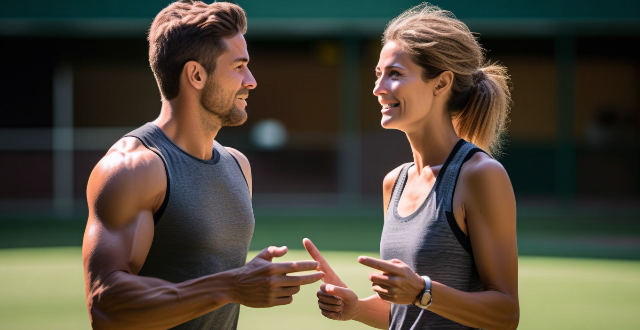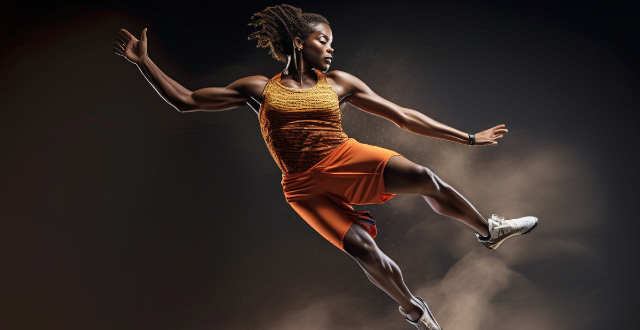Tail Emotion

Can yoga or meditation combined with exercise enhance emotion regulation ?
Emotion regulation is a crucial aspect of mental health, and it refers to the ability to manage and control one's emotional responses. There are various ways to enhance emotion regulation, and one of them is through physical activities such as yoga, meditation, and exercise. In this article, we will discuss how these practices can help improve emotion regulation. Yoga is a mind-body practice that combines physical postures, breathing techniques, and meditation. It has been shown to have numerous benefits for mental health, including enhancing emotion regulation. Yoga helps to reduce stress and anxiety, increases self-awareness, and promotes mindfulness. Meditation is another practice that involves focusing the mind on a particular object, thought, or activity to achieve a mentally clear and emotionally calm state. Like yoga, meditation has been shown to have numerous benefits for mental health, including enhancing emotion regulation. Meditation improves attention and focus, reduces emotional reactivity, and increases self-awareness. Exercise is another effective way to enhance emotion regulation. It reduces stress and anxiety, improves mood, and increases resilience. Combining yoga, meditation, and exercise can provide even greater benefits for emotion regulation by providing a comprehensive approach to well-being that addresses both the physical and mental aspects of emotion regulation.

How do sports psychology techniques help with emotion regulation ?
This article explores the importance of emotion regulation in sports performance and how sports psychology techniques can help athletes regulate their emotions. The techniques discussed include self-talk, visualization, goal setting, breathing techniques, and mindfulness meditation. These techniques enable athletes to stay focused, confident, and motivated during competitions, leading to better performances. By incorporating these techniques into their training routines, athletes can learn to manage their emotions effectively and maintain optimal mental states for peak performance.

How do sports photographers capture the beauty and emotion of athletic events ?
**How Sports Photographers Capture the Beauty and Emotion of Athletic Events** 1. **Understanding the Sport**: Research and anticipation help photographers capture key moments. 2. **Equipment Choices**: Appropriate lenses, high-speed cameras, and stabilizing devices are essential. 3. **Positioning**: Unique angles, perspectives, and clean backgrounds enhance photos. 4. **Timing and Composition**: Precise timing and thoughtful composition are crucial. 5. **Lighting**: Natural and artificial lighting affect photo quality. 6. **Emotion and Storytelling**: Capturing emotions and telling stories through images is impactful. 7. **Post-Processing**: Editing and selecting the best shots is part of the process. 8. **Ethics and Professionalism**: Respect and professionalism guide sports photographers in their work.

In what ways can dance be considered both a sport and an art form ?
Dance is a unique form of expression that can be considered both a sport and an art form. As a sport, it requires physical strength, endurance, and coordination. As an art form, it involves creativity, emotion, and aesthetics. Dancers must have strong muscles to execute lifts, jumps, and other challenging movements. Dance performances often last for several hours, requiring dancers to maintain their energy and stamina throughout the show. Dancers must have excellent coordination to move their bodies in sync with music and other dancers on stage. Many dance styles require a high degree of flexibility. Dancers must adhere to strict training regimens to maintain their physical condition and technique.

How can we promote resilience in adolescents during their developmental years ?
The article discusses the importance of promoting resilience in adolescents to help them cope with various challenges during their developmental years. It suggests several strategies, including encouraging positive thinking, building problem-solving skills, promoting social support, encouraging participation in extracurricular activities, teaching emotion regulation skills, and promoting healthy lifestyle habits. These strategies can help adolescents develop the resilience they need to thrive during their developmental years.

Can you recommend high-class restaurants that specialize in seafood delicacies ?
**Recommendation for High-Class Seafood Restaurants:** 1. **The Grand Banks** in Boston offers elegant dining with harbor views, live lobster tanks, and an extensive wine list. Specialties include New England Clam Chowder and Lobster Rolls. 2. **Escoffier** in Los Angeles boasts an award-winning chef, elegant decor, and seasonal menu changes. Dishes like Sautéed Spiny Lobster Tail and Pan-Seared Halibut are signature items. 3. **Le Bernardin** in New York holds three Michelin stars, offering innovative seafood dishes in a sophisticated atmosphere. Poached Turbot and Black Bass Crudo are among its specialties. 4. **Flying Fish** in Chicago provides stunning city views, creative seafood dishes, and a chic urban vibe. Grilled Octopus and Smoked Trout Salad are featured on the menu. 5. **Gary Danko** in San Francisco offers an upscale dining experience with a seasonal menu and locally sourced ingredients. Salmon with White Chocolate and Olive Oil-Poached Halibut are highlights. 6. **Blue Fin** in Las Vegas is known for its luxurious setting, international seafood selection, and impressive sushi bar. The Seafood Tower and Raw Bar Selections are noteworthy. 7. **Joe's Pub & Crab House** in Miami Beach combines a casual yet upscale environment with live music and a wide variety of fresh seafood options, including Stone Crabs and Florida Stone Crab Claws. 8. **Chart House** has multiple locations across the U.S., offering spectacular waterfront views, an extensive seafood menu, and a lively atmosphere. Pacific Rim Style Seafood and Hawaiian Style Mahi-Mahi are among its specialties.

What are the latest trends in digital marketing ?
The article discusses the latest trends in digital marketing, including personalization, voice search optimization, video marketing, influencer marketing, chatbots and AI, and social media stories. Personalization involves using data analytics to create personalized experiences for customers, while voice search optimization requires optimizing content for voice search by using long-tail keywords and natural language. Video marketing is a popular trend that involves engaging with the audience through video content, while influencer marketing allows brands to tap into an influencer's loyal following to promote their products or services. Chatbots and AI are being used to automate customer service tasks and provide personalized recommendations to customers. Social media stories have become a popular way for brands to connect with their audience through short-form content that disappears after 24 hours. The article concludes that staying up-to-date with these trends is essential for any business looking to succeed online.

Can exercise compensate for poor sleep quality in terms of cognitive function ?
The article discusses the importance of sleep for cognitive function and whether exercise can compensate for poor sleep quality. While exercise has benefits for cognitive function, it cannot fully replace the memory consolidation and emotion processing that occurs during sleep. Chronic sleep deprivation can lead to long-term changes in brain structure and function that may not be reversible through exercise alone. To maintain optimal cognitive function, both regular physical activity and good sleep habits are essential.

How can sports psychology help athletes manage stress and pressure during competitions ?
Sports psychology helps athletes manage stress and pressure during competitions by providing techniques and strategies to improve mental toughness, confidence, and focus. These techniques include goal setting, visualization, breathing exercises, mindfulness and meditation practices, and coping strategies such as problem-solving and emotion regulation. By implementing these tools, athletes can improve their performance and enjoy their sport more fully.

How does sports leadership differ from other types of leadership ?
Sports leadership is distinguished by its goal-oriented focus, clear team hierarchy, emotional intensity, physical component, short-term outcomes, public scrutiny, adaptability, and cultural impact. Unlike other types of leadership, sports leaders must manage high levels of emotion, direct physical performance, and adapt quickly to changing circumstances during a game. They also play a significant role in shaping the culture and values of their team, which can have a profound impact on the wider community.

How can I improve my food styling skills for better photographs ?
Improving food styling skills requires patience, creativity, and an understanding of both culinary arts and photography. Here are some comprehensive steps to elevate your food styling game for better photographs: 1. Develop an eye for detail by studying the work of professionals and understanding composition basics. 2. Invest time in food preparation by choosing the right ingredients, considering color and texture, and preparing extra portions. 3. Master the art of arrangement by utilizing height and layers, incorporating props, and focusing on details. 4. Lighting is key, so shoot near windows or in natural light, use diffusers or reflectors to soften harsh light, and experiment with angles. 5. Post-production magic involves familiarizing yourself with editing software, maintaining consistency, and learning from critique. 6. Practice makes perfect, so set up regular photo sessions, document your process, and stay updated on trends and new techniques in food photography. 7. Tell a story by contextualizing your shots and evoking emotion. By focusing on these areas, you'll find that your food styling skills will naturally improve, leading to more stunning and appetizing photographs.

What role does cinematography play in making sports movies engaging ?
Cinematography plays a crucial role in making sports movies engaging by capturing the essence of athleticism and the drama of competition. Through the use of various filmmaking techniques, cinematographers can bring the excitement and emotions of sports to life on the screen. Here are some ways in which cinematography contributes to the appeal of sports movies: 1. Dynamic Camera Movement - Tracking shots, crane shots, and handheld shots create a sense of speed and momentum, reveal the scale of stadiums and crowds, and create an intimate, immersive experience for the viewer. 2. Creative Angles and Perspectives - Low angles make athletes appear powerful and dominant, high angles show the vulnerability or isolation of a character within a vast arena, and point-of-view shots allow the audience to see what the athlete sees, enhancing their connection to the action. 3. Lighting and Color - Contrast and shadows highlight the physicality of sport and the intensity of effort, color grading is used to convey mood, team identity, or historical eras, and backlighting creates a dramatic effect around athletes, often used in climactic moments. 4. Slow Motion and Fast Motion - Slow motion extends key moments to emphasize grace, power, or impact, while fast motion compresses time to show training sequences or build anticipation. 5. Special Effects and Visual Effects (VFX) - Chromakeying isolates athletes against different backgrounds for creative storytelling, CGI recreates historical events or enhances visually complex sports like underwater scenes, and compositing combines multiple layers of footage for dynamic scenes that couldn't be captured live. 6. Sound Design - Audio effects synch sound effects with visuals to heighten the impact of movements, and musical score supports the visuals, enhancing tension or celebration. 7. Editing Pace - Quick cuts build excitement during high-intensity moments, while long takes sustain tension during crucial plays or showcase skillful execution. 8. Storytelling through Visuals - Symbolic images use iconic sports imagery to tell stories without dialogue, and composition arranges elements within the frame to guide the audience's focus. 9. Emotional Engagement - Close-ups show facial expressions and reactions, drawing viewers into the emotional state of athletes, and environmental interaction captures interactions between athletes and their surroundings, like skimming fingers on a track or splashes in a pool. 10. Juxtaposition and Montage - Narrative montage tells backstory or parallel plotlines through a series of short, thematically connected shots, while contrast montage compares different worlds or states of mind by cutting between contrasting scenes. In summary, cinematography is not just a tool for aesthetic enhancement in sports movies; it is a language that translates the physicality, emotion, and narrative of sports into a compelling visual experience. By masterfully employing these techniques, filmmakers can transform a simple game into an unforgettable cinematic journey.

How do QoS (Quality of Service) settings enhance network performance ?
Quality of Service (QoS) settings enhance network performance by prioritizing traffic, allocating bandwidth, managing congestion, and improving user experience. This is achieved through mechanisms such as traffic prioritization, bandwidth allocation, congestion management techniques, shaping and policing, and improved user experience. By implementing QoS strategies effectively, network administrators can ensure that critical applications receive the necessary resources and achieve optimal network performance.